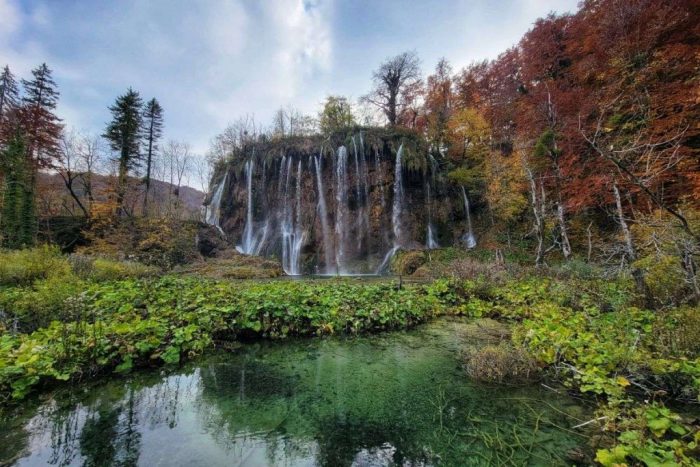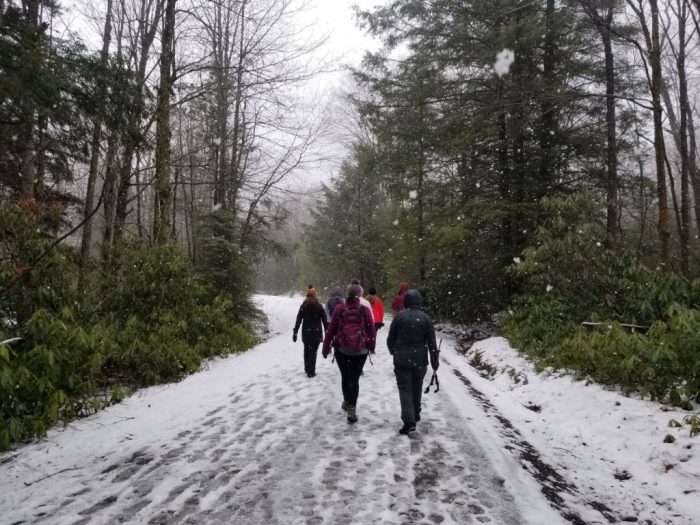How to Explore Uganda Wildlife for the Adventurous Animal Lover
Are you the person who constantly DMs baby animal videos to her friends? Have you always dreamt of seeing wildlife roam free in their natural environments? Sounds like you need to book an Uganda wildlife adventure ASAP.
Mighty cats, mountain gorillas, chimpanzees, lions, buffalo, and more species await you in Uganda’s ten national parks — some of which are only found in a handful of places in the world.
Take it all in from the safety of a safari land cruiser or trek your way towards the animals. Don’t worry: you’ll have a guide with you at all times!
Uganda Wildlife Highlights
Uganda’s diverse natural landscape, ten national parks, and twelve wildlife reserves make this country an absolute dream for animal lovers. Forget the zoo: you’ll spot wildlife you never expected to encounter in your life — and you’ll soak it all up from inside their natural habitats! Cue the chorus of “Awww”s
Do your best to contain your excited squeals (it’s hard, I know, but we don’t wanna startle that baby elephant!) as you venture through the savannah on a game drive, searching for elephants, lions, cheetahs, monkeys, giraffes, and more. Then feel your eyes well up as you walk to a group of gorillas or chimpanzees and — what’s that in the background? Hippos splashing in the water? Yup!
But as human intervention persists in this country, more and more animals found in the region face threats of habitat destruction, illegal poaching, and food scarcity. As a result, several mammals that once called Africa home are now vulnerable, endangered, or even extinct species.

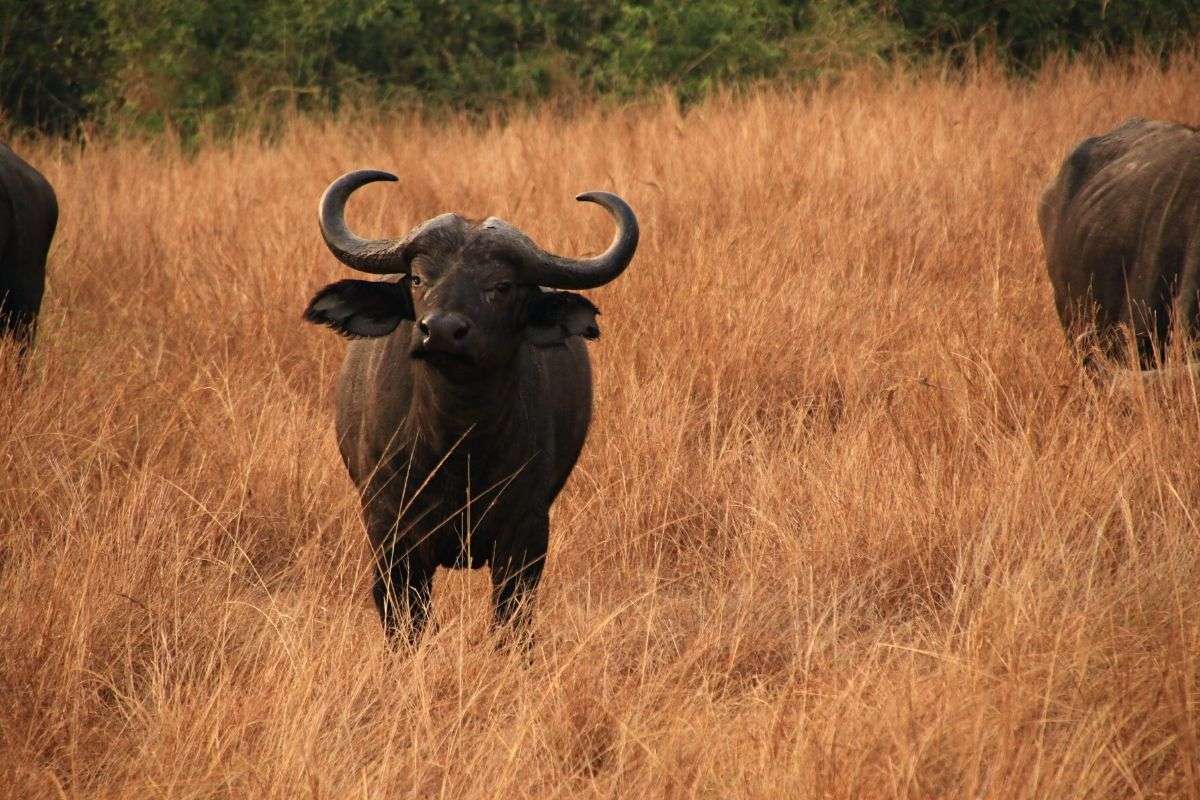


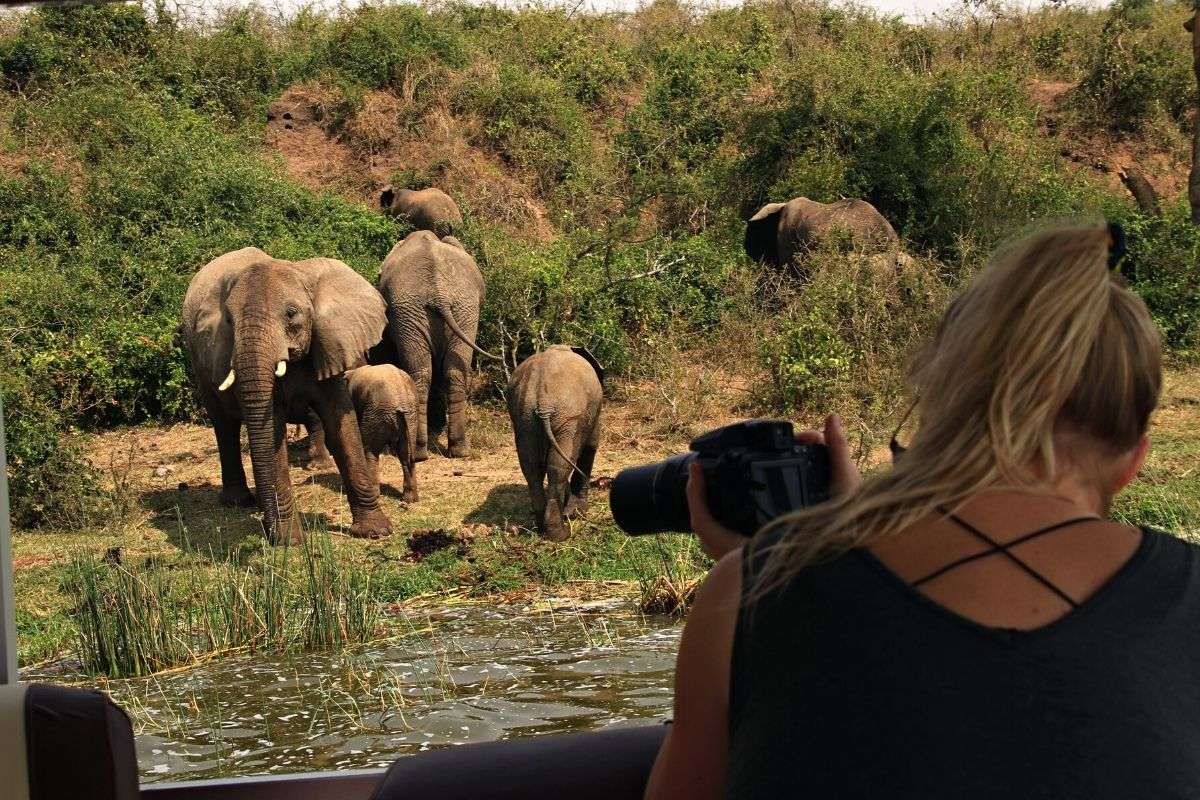
Luckily, with the help of the Uganda Wildlife Authority’s protected areas and national parks, conservation efforts minimize harm to Uganda’s birds, mammals, and other animals. In fact, eco tourism is among the best actions you can take to help! So add an Uganda wildlife viewing excursion to your itinerary, and prepare to see these awe-inspiring critters up close.
Make sure you book wildlife tours with reputable guides, like those approved by the Uganda Wildlife Authority. Eco tourism supports the local economy by sharing profits throughout the community and creating new jobs, which incentivizes conservation efforts and deters illegal trade. Book your trip to Uganda’s national parks with Explorer Chick to ensure your experiences are as ethical as possible.
Top wildlife sightings in Uganda
If you think the African continent is all sandy Saharan desert, think again. Uganda wildlife thrives in the country’s diverse habitats of dense woodland, tropical forests, lush waterways, savannahs, and more. This unique terrain mixes everything from open grasslands to mighty mountain ranges, making east Africa an ideal home for many species to flourish.
Grab your binoculars, girl! You won’t wanna miss those incredible Uganda animals. Spoiler alert: you’ll see mountain gorillas, elephants, chimpanzees, buffalo, hippos, leopards, lions, and MORE!
Mountain gorillas
One of Uganda’s biggest draws is its majestic mountain gorillas — a species found only in a handful of African countries. Gorilla encounters are truly life-changing experiences. After all, humans are closely related to this largest primate, sharing a jaw-dropping 98 percent of the same DNA.
Nomadic mountain gorillas are highly threatened by habitat loss, disease, and illegal poaching. Still, this endangered species has slowly been making a comeback thanks to protected areas in western Uganda, Rwanda, and the Democratic Republic of Congo. Only around 1000 of these primates exist today, spread across these three countries, but that’s a big cause for celebration. The population has more than doubled since 2010 when a mere 480 mountain gorillas survived.
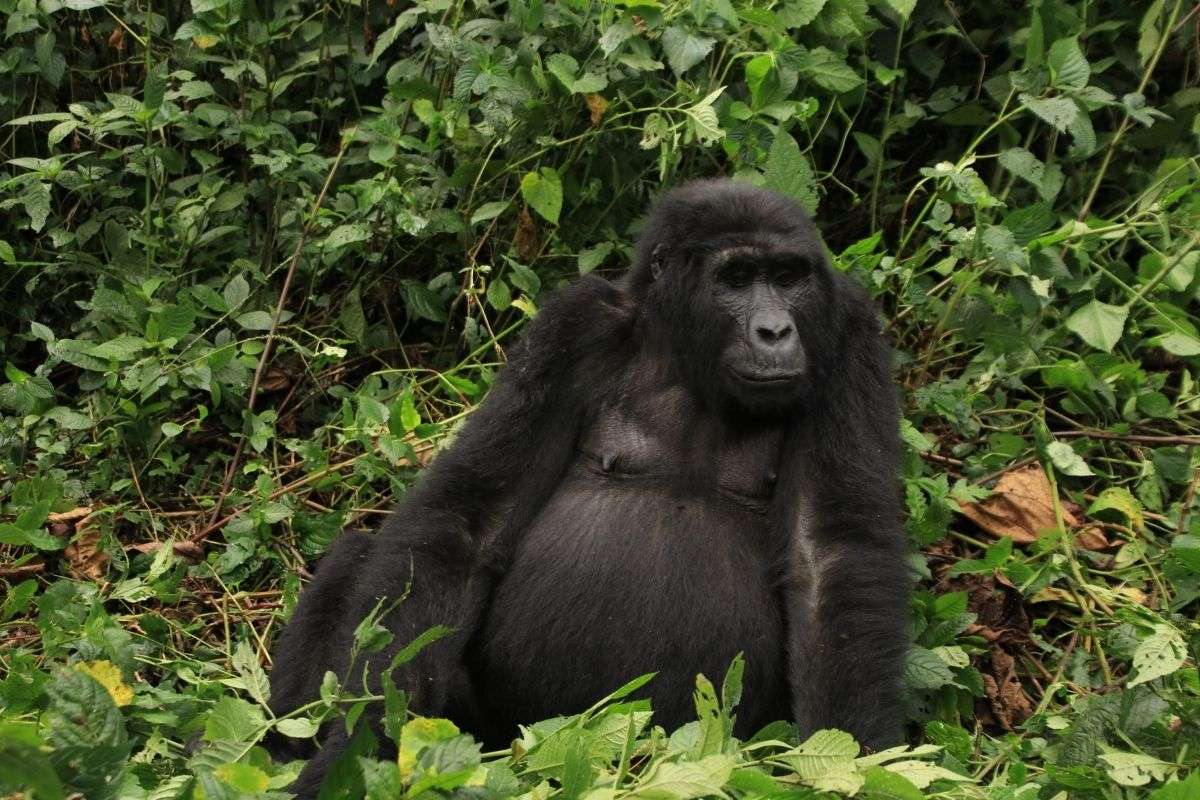
Where to see mountain gorillas in Uganda
Bwindi Impenetrable National Park hosts over a third of the world’s endangered mountain gorillas and 15 habituated groups available for trekking. Or, visit the country’s smallest national park, Mgahinga, in the Virunga Mountains, specifically created to conserve these largest primates.
Want to learn more? We recommend this book:

Lions
Prepare your most royal curtsy to impress this mighty king of the jungle: it’s the African lion, of course! Ever the social butterflies, lions’ unique social structure sets them apart from other cat species. Their prides typically include a few territorial males (yes, with those envy-worthy majestic manes!), five to ten females, and their cubs. But those mommas don’t just sit around lookin’ pretty — they do up to 90 percent of the pride’s hunting. Go, girl!
Heartbreakingly, African lion populations have dropped by 43 percent over the past 21 years and officially became a vulnerable species in 1996. Their biggest threats? The effects of humans and food scarcity.
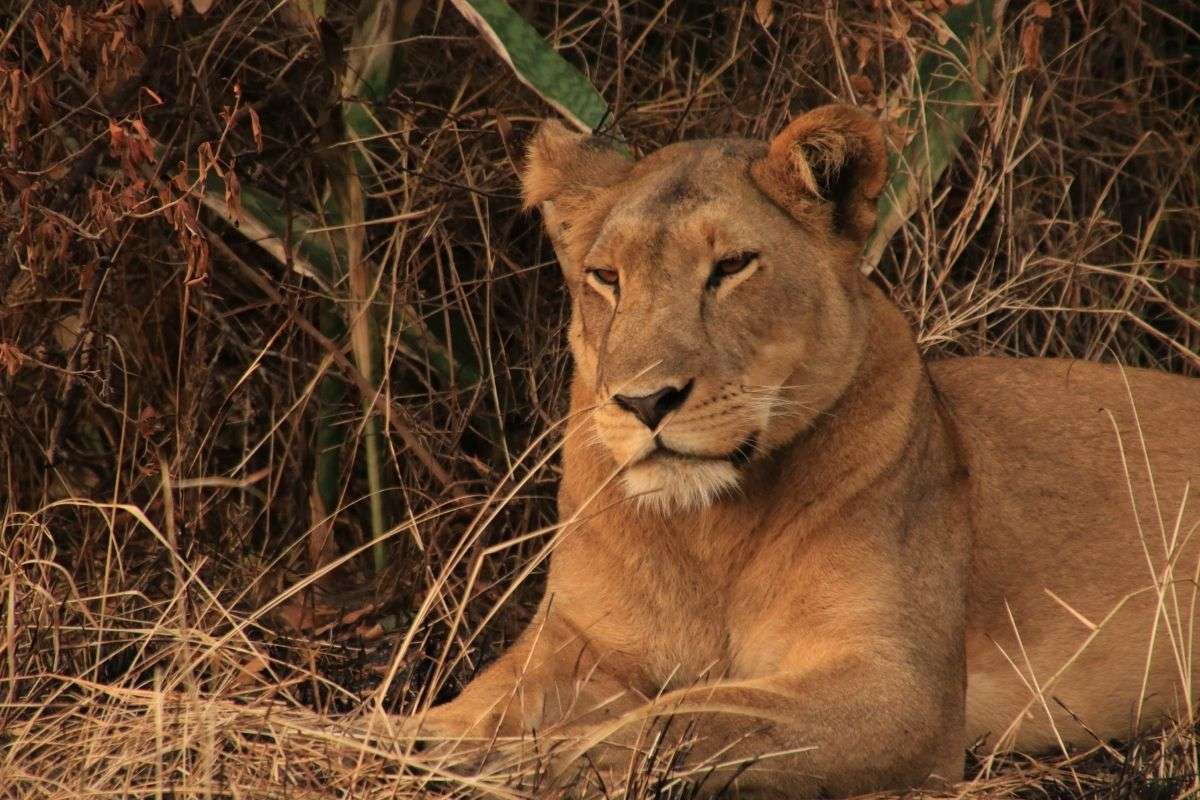
Where to see lions in Uganda
Add Kidepo Valley National Park, Murchison Falls National Park, or Queen Elizabeth National Park (QENP) to your itinerary for an authentic Lion King-esque experience. But if you’re really after a “Pinch me!” moment, visit QENP to spot their famed tree climbing lions!
Chimpanzees
Gorillas might steal all the primate hype in Uganda, but don’t count out the adorable chimpanzee, who humans are even more closely related to! You’ll see a lot of humanity in the extroverted chimps who live in community groups with up to 100 other chimpanzees and are remarkably resourceful. These hunter-gatherers seem to use medicinal plants to treat their ailments!
Sadly, human behavior has caused chimpanzees to go extinct in four countries. These days, chimps are an endangered species, with about 172,000 to 300,000 primates left in the wild. And you can spot roughly 5,000 of them in Uganda! Anti-poaching efforts and eco-tourism highlighting the incredible chimpanzee, like chimp tracking, keep these critters safer.
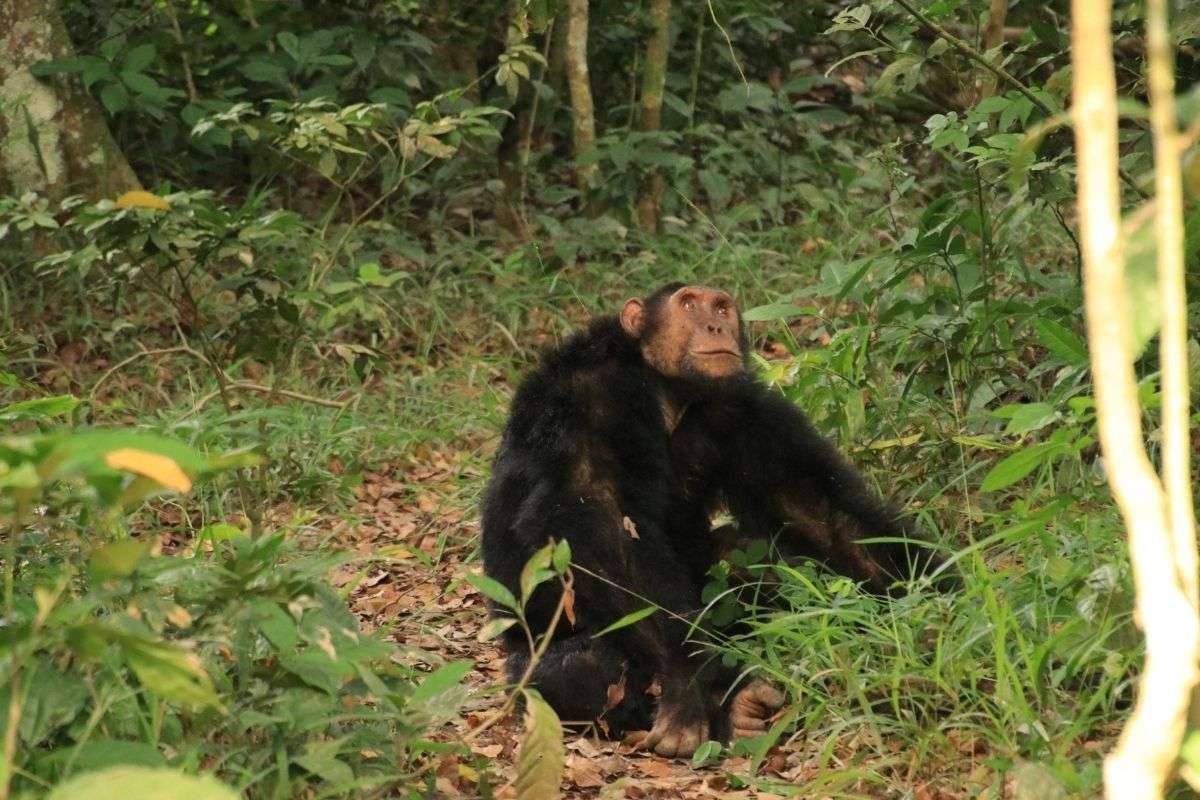
Where to see chimpanzees in Uganda
Channel that Jane Goodall energy and visit the adorable chimpanzee population in Kibale National Park, where nearly 1,500 individuals reside. While this is the most likely spot for chimpanzee sightings, you can also track them in Budongo Forest Reserve, Bwindi Impenetrable National Park, Queen Elizabeth National Park, Kyambura Gorge, and the Semliki Valley.
Elephants
All hail the African elephant: the largest land mammal on earth! Naturally, these animals have the longest gestation period of any mammal: a whole 22 months. And it’s all power to the mommas in an elephant family — females and calves live within complex social arrangements while males tend to gather by themselves.
Of course, elephants are known for their iconic ivory tusks, making them a huge target for poachers. As a result, estimated populations of African elephants have fallen by over 11.5 million in the past hundred years, mainly due to the illegal ivory trade. Still, habitat loss hasn’t helped them either. These days, ivory demand is dropping, and vast portions of Africa’s elephant population thrive within protected areas.
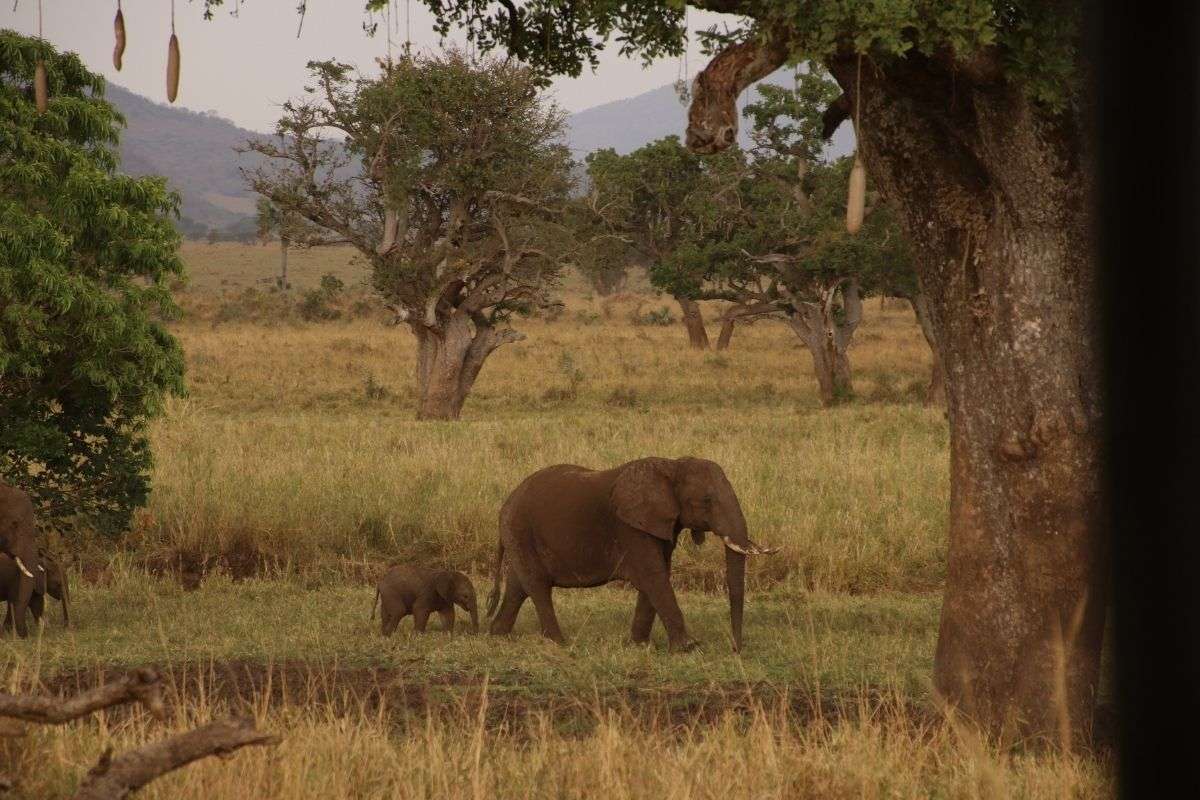
Where to see elephants in Uganda
Visit the 5,000 some African elephants in Uganda by visiting Kidepo National Park, Murchison-Semliki Landscape, and the Greater Virunga Landscape. Though this population may seem meek compared to their numbers a century ago, the elephant species has grown by 600 percent since the 1980s. Things are looking up!
The best places in Uganda for wildlife spotting
The Uganda Wildlife Authority manages ten national parks, twelve wildlife reserves, five community wildlife management areas, and thirteen wildlife sanctuaries. Impressive, right? Uganda’s national parks are the best spots in East Africa to view the country’s huge array of mammals, birds, and so many other species.
All of the national parks host unique ecosystems that make these protected areas exceptionally important. With habitats including humid forests, mountains, wetlands, savannahs, and woodland zones (to name a few), it’s no wonder Uganda is a prime wildlife watching destination.
- https://ec-old.design-works.com/journal/gorilla-watching-trekking-in-africa/Kidepo Valley National Park, Uganda. Uganda’s Kidepo National Park is a wildlife oasis where animals EASILY outnumber humans. Over 500 species call the magical, remote Kidepo Valley home.
- Mgahinga Gorilla National Park, Uganda. Two words: mountain gorillas. Nestled in the southwest corner of Uganda, this volcanic range was declared a national park just to protect these primates. Down for some gorilla trekking, anyone?
- Bwindi Impenetrable National Park, Uganda. As if being one of two national parks in the county that hosts mountain gorilla families wasn’t enough, Bwindi National Park is a UNESCO World Heritage Site. Bwindi’s 900+ species of flora and fauna give the park its well-deserved classification as a “natural phenomenon.”
- Lake Mburo National Park. Unlike Dorothy heading to Oz, a cowardly lion probably won’t join your trek through Lake Mburo National Park — they’re super rare here! Instead, enjoy a wonderful mix of over 350 bird and 86 mammal species found in Lake Mburo, including buffalo, leopards, and Burchell’s zebra.
Best time for wildlife viewing
Let’s clear up one thing: there’s no wrong time to spot wild animals in Uganda. However, the best time to plan your visit totally depends on which wildlife you’re itching to see most.
Dry season equals high season, so prep for pricier, busier travels through mid-May to mid-October and December to February. But you’ll catch great views of gorillas, chimpanzees, and lions — oh my! Visiting wildlife is also much easier when the vegetation is dry and sparse.
Come March, Uganda’s wet season is in full swing until May, then again from October to November. Rainy days bring flourishing flora and excellent bird watching. Gorilla and chimp tracking are often cheaper in these slippery conditions, but you may find the groups sooner. If you need some reprieve from the rain, head to Murchison Falls National Park, where the climate’s a tad drier.
Rules for wildlife viewing
Park rangers, researchers, and the Uganda Wildlife Authority work tremendously hard at conserving vulnerable populations of the country’s native species. They’re the pros, and they understand the ins and outs of animal behavior and threats to their survival. That’s why there are some rules to follow on any Uganda wildlife expedition! It’s all done to keep you and the animals safe and sound.
- Maintain your distance. As captivated as you are by the incredible Uganda wildlife, always keep your distance from any wild animals you see. Approaching an animal may be seen as a threat, and you never know how they’ll respond. Respect their space for your safety and theirs.
- Be respectful of the habitat. When visiting wildlife viewing spaces, we enter many species’ natural habitats. Always treat it with the same respect you expect guests to show for your home.
- Avoid primates when ill. It may seem like NBD to check out those Uganda animals when you have a stuffy nose, but several species you’ll encounter are closely related to humans and vulnerable to the same illnesses: specifically the endangered mountain gorillas, chimpanzees, and other primates. So stay away when under the weather to avoid transmitting illnesses!
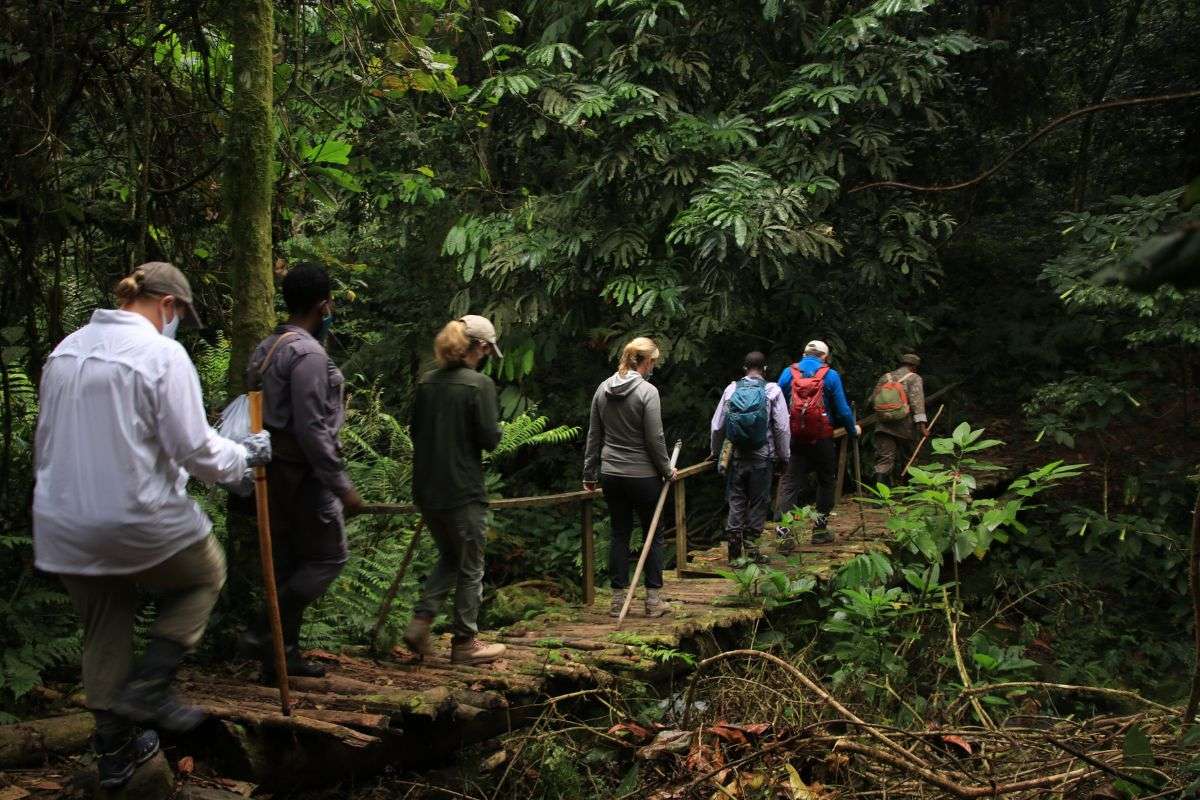
How to prepare for wildlife viewing in Uganda
Wildlife viewing isn’t as passive as it sounds. You’ll be putting in some work to see those animals up close, so getting your body into hiking mode is essential.
Start training a couple of months before your trip by walking local trails with hiking poles and working on uphill endurance with exercises like stair-climbers. Definitely bank some quality hours moving your bod while wearing the clothing you’ll be bringing to Uganda — especially your shoes and backpack!
The trickiest part of preparing for an Uganda wildlife adventure is obtaining permits for activities like gorilla trekking. Reserve your spot about three to six months before your vacay, especially if you’re traveling during the busy season.
Uganda wildlife viewing pack list
First things first, pack the Kleenex to catch your tears that’ll flow the minute you see an elephant up-close (it happens to the best of us). Then, consider what type of adventure you’re going on. Wildlife trekking can involve hours of hiking in forest areas, while game drives are much less physically demanding. So pack for your itinerary, but bring the following:
- Great hiking shoes (1 pair). Be ready for all Uganda has to offer by packing some comfy, broken-in walking shoes. Trekking to wildlife will be NBD when you’ve got a great foundation underneath you. Read our guide to choosing hiking boots to know what is right for you.
- Light, waterproof jacket (1). Weather can be unpredictable in the rainforest, and temperatures can change depending on where you are in Uganda. Prep for all conditions with a waterproof jacket that’s light enough to pack! We like the Black Diamond StormLine Stretch Rain Shell.
- Neutral-toned long-sleeve shirts and pants (1 pair). Bright colors are a no-no among Uganda wildlife: they can feel threatening to the animals! So go neutral, and pack long clothing to avoid scratches from branches during your expedition.
- Binoculars (1 pair). Avoid any FOMO by bringing a pair of binoculars on your safaris and game drives. You def won’t wanna miss spotting that camouflaged AF leopard hanging out in the trees, so make sure you pack this one.
Ready to Get Trekking?
Hold onto your new BFF’s hand as your heart overflows with joy, excitement, and adorableness on your Uganda wildlife adventure with Explorer Chick. Join us and ten other animal-loving gals as we track mighty cats, bathe within view of wild zebras, and walk among the mountain gorillas. Save your spot now!
Meet the Writer

Megan Wray
Megan Wray is a queer, mixed-race Japanese-Canadian freelance writer based on Treaty 1 Territory. Passionate about pleasure, identity, and anti-oppression, Megan’s fuelled by meaningful chats about topics that aren’t “appropriate” for dinner table conversation. When she’s not writing, you can find Megan cooking vegan food, singing to live music, and trying to understand astrology.
More About Our Favorite International Destinations
- 7 Hot Springs in Uganda That You HAVE to Visit
- Best Castles of Scotland: Must-See Enchanting Castles
- 60th birthday trip ideas for mom
- What You Need To Know Before You Hike Rainbow Mountain Peru
- The Best Cycling Destinations in Croatia
- Best solo trips for women who love adventure
- Your Complete Itinerary of Things to Do in Jordan: An Adventurer’s Guide
- Iceland Insights: Where To See Puffins
- How to Symbolically Adopt a Gorilla to Support Wildlife Conservation


